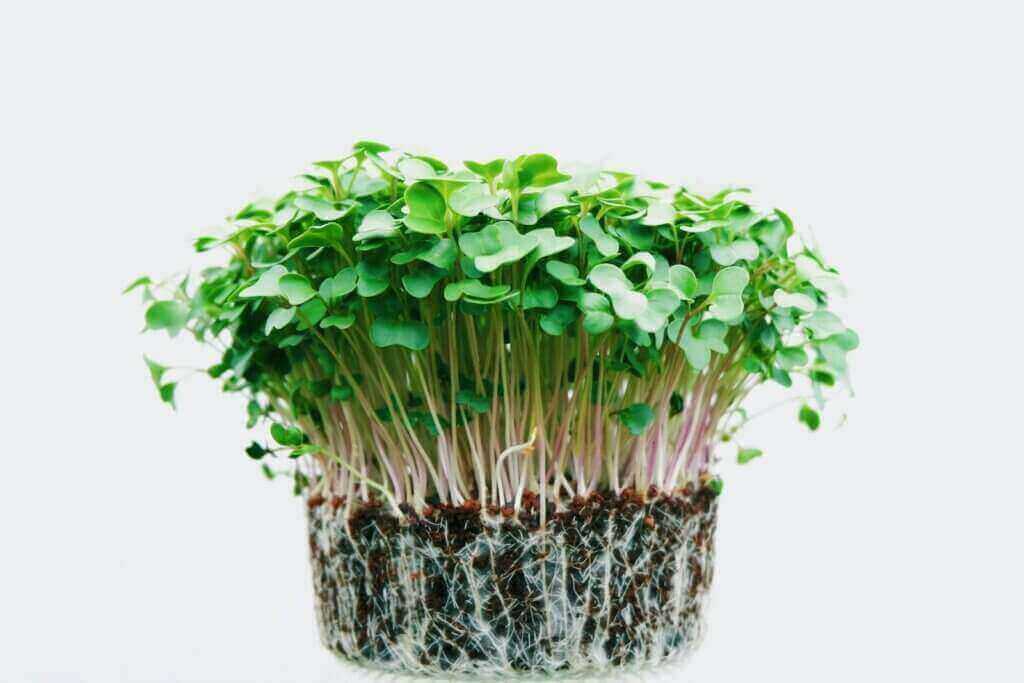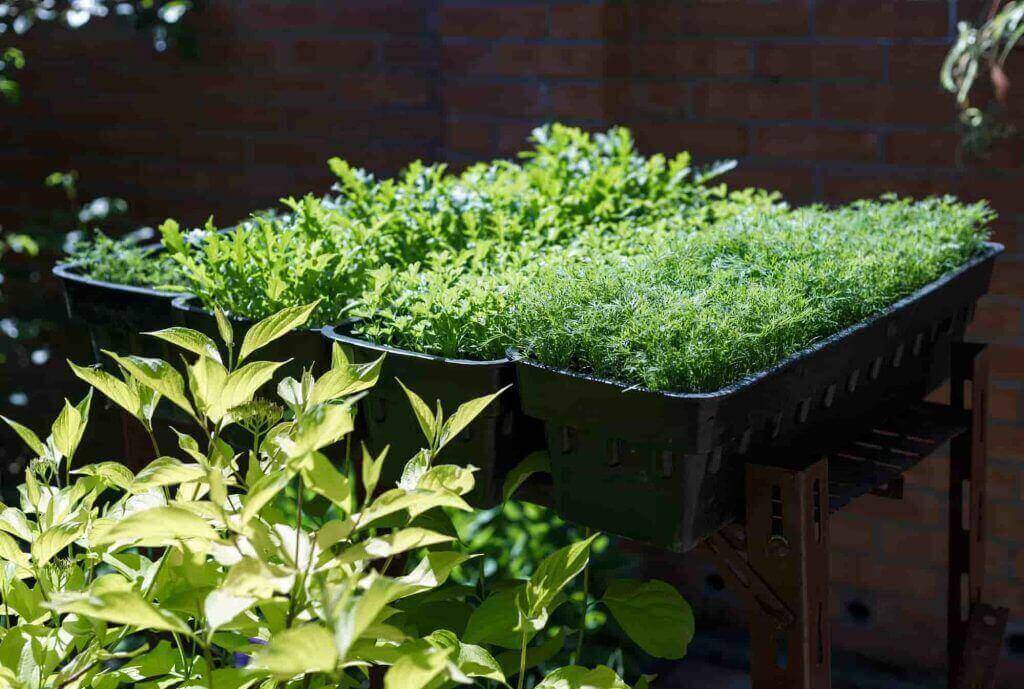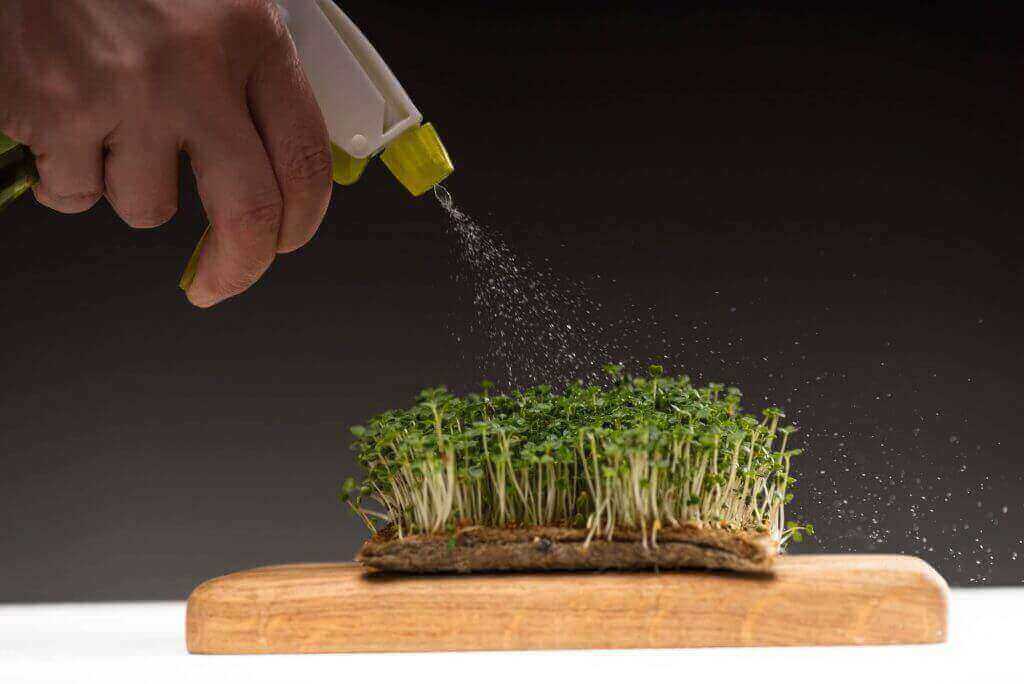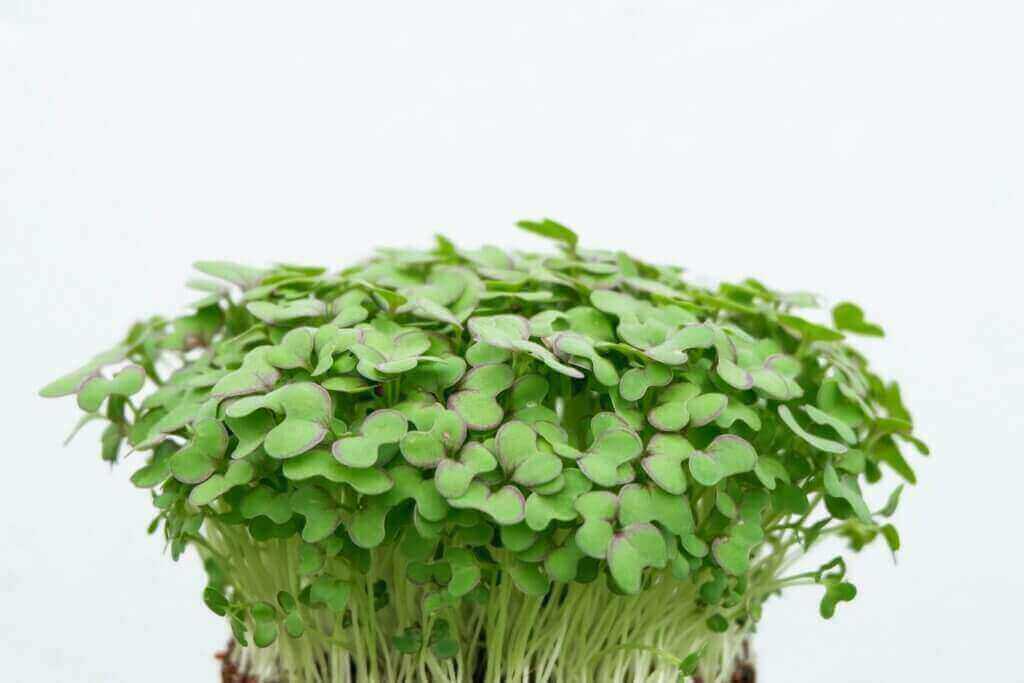👋 Click the mic button to talk to Alfred, the Todd's Seeds Gardening/Sprouting Expert – Feel free to ask him anything!
Ask Virtual Todd Anything - Click the Mic
When a plant’s germination has produced a stem and its first leaves, it’s ready to harvest as a microgreen. There are many types of microgreens. This means they are very young plants harvested after only 2 or 3 weeks. This makes them nutritious as they still hold many of the nutrients preserved in the seeds. The nutritional value of microgreens added to the fact they are easy to grow is making them increasingly popular.

As microgreens are so quick and easy to harvest many people have started their own microgreens business, selling their produce locally. This is beneficial to the community as microgreens are at their most nutritious when fresh. However, any new business would have to research what types of microgreens would sell in their area.
This is due to the fact that there are literally hundreds of different types of microgreens to choose from. Not only are most types of vegetables able to be grown as microgreens but also other plants, including some flowers. Some grains, such as rice are also grown as microgreens, as are some legumes such as Mung Beans.
The diversity of types means that microgreens can offer a wide range of tastes, colors and textures to choose from. Although each type of microgreen may be different, they are all easy and quick to grow.
Whilst microgreens can be grown from many different families of plants, they are grown mainly from six of those. These are: Brassicaceae, Asteraceae, Apiaceae, Amaryllidaceae, Amaranthaceae, and Cucurbitaceae. Most of these families of plants are already well-known but not necessarily for their microgreens.
Let’s take a look at the types of microgreens offered just from these 6 most commonly used plant families.

Types of Microgreens – Brassicaceae Family
This family of plants is probably best known to you as cauliflower, arugula, cabbage, watercress, broccoli radish, and watercress. The family also includes medicinal plants. This plant family contains over 1500 species. Brassicas are said to have been used in India as a food source as early as 3000BC.
It is believed though, they were first used in Europe 8000 years ago. Although for most of this time they have been consumed as fully grown vegetables or used for their oil properties. They have only more recently been used as microgreens.
Asteraceae Family
Thought to have originated in Argentina 5 million years ago this plant family is perhaps one of the largest. To most people, this family is best known for flowers such as marigolds, chrysanthemums, dahlias, asters, and dandelions. It also includes many spices and species which would be ideal as microgreens, such as lettuce and artichokes.
Apiaceae Family
Some members of this family of plants, like hemlock and fool’s parsley, are poisonous. The non-poisonous varieties have long been used as herbs and spices. Cumin, anise, dill, and coriander are examples of some spice and herb varieties.
Whilst some of these may be used as microgreens, the vegetables in this family are probably more popular as microgreens. Among those vegetables are carrots, parsley, parsnip, and celery.
Amaryllidaceae Family
Mainly found in subtropical or tropical climates this family is possibly best known for its daffodils and snowdrops. The family does however contain other, perhaps even better-known species, such as leeks, garlic, onion, and chives. In all, this family has a large assortment of plants that are suitable for growing as microgreens.
Amaranthaceae Family
Often red in color this family of plants includes beets, including chard, garden beets and sugar beets. In the past, due to their nutritional value some of these plants have been grown for use as pseudo-grain crops. Only now are they being grown as microgreens for that same nutritional value.
In particular, Quinoa has become popular in the 21st century due to its very high nutritional value. There are many other species in this family that make excellent, nutritious microgreens.
Cucurbitaceae Family
This family of plants is usually only found in tropical or subtropical areas as they can be susceptible to freezing. However, that is not a problem if grown under normal conditions for microgreens. Microgreens can be grown anywhere in the world, regardless of climate.
Often known for their vines this family of plants includes melons, gourds, squashes, cucumbers, and pumpkins. These plants are of course best known for their large edible fruits. As microgreens though, the small shoots and new leaves can be equally tasty.

Growing microgreens
It’s not just eating microgreens that is rapidly growing in popularity but also growing microgreens. Growing your own microgreens is easy and provides you with multiple choices of taste and colors. Whilst the actual growing of microgreens is easy, it is essential to use the correct seeds for the different types of microgreens.
This means not only ensuring you buy the correct type of microgreen seeds but also seeds specifically for growing microgreens. Todd’s Seeds set aside seeds specifically for growing microgreens and have a diverse range.
For centuries the nutritional value of microgreens has gone unnoticed and even top chefs were only using them as garnish. Today this is all changing with home cooks as well as chefs using different types of microgreens to add nutrition to their meals.
Although the types of microgreens is potentially huge, very little variety is offered for sale, even in health food stores. If you grow your own you can make the most of the crazy number of types of microgreens available. One other benefit of growing your own microgreens is their freshness.
Microgreens are at their best when fresh and so, you can cut just enough to cover your daily need. If you do harvest more than you can eat in a day though, refrigeration will help keep them fresh.
With hundreds of plants potentially being able to be used as microgreens, your imagination is perhaps the only limiting factor.
Due to their diversity and nutritional value, microgreens may soon become a common household name.

You can also watch the video version of this article below about types of microgreens.
Subscribe to our channel for more gardening and sprouting videos: Todd’s Seeds Youtube Channel
Microgreens offer the advantage of freshness, allowing you to harvest just the right amount for your daily needs. Even with a wide variety of plants to choose from, your creativity is the only limitation. With their diverse nutritional benefits, microgreens are poised to become a household staple.
Microgreens are a versatile and nutritious addition to any household. With a wide range of plants to choose from, you can easily incorporate them into your daily meals. Their freshness ensures that you can harvest just the right amount for your needs. As a result of their diverse nutritional benefits, microgreens are on track to become a staple in households everywhere.
Here’s a list of various microgreens:
- Alfalfa
- Arugula
- Basil
- Beet Greens
- Broccoli
- Buckwheat
- Cabbage
- Carrot
- Cauliflower
- Chard
- Chia
- Cilantro
- Clover
- Collard Greens
- Dill
- Endive
- Fennel
- Garlic Chives
- Kale
- Kohlrabi
- Leek
- Lentil
- Mustard Greens
- Pea Shoots
- Radish
- Red Amaranth
- Sorrel
- Spinach
- Sunflower
- Tatsoi
- Turnip
- Watercress
- Wheatgrass
These microgreens offer a variety of flavors and nutritional benefits, making them popular for culinary uses and health-conscious diets.